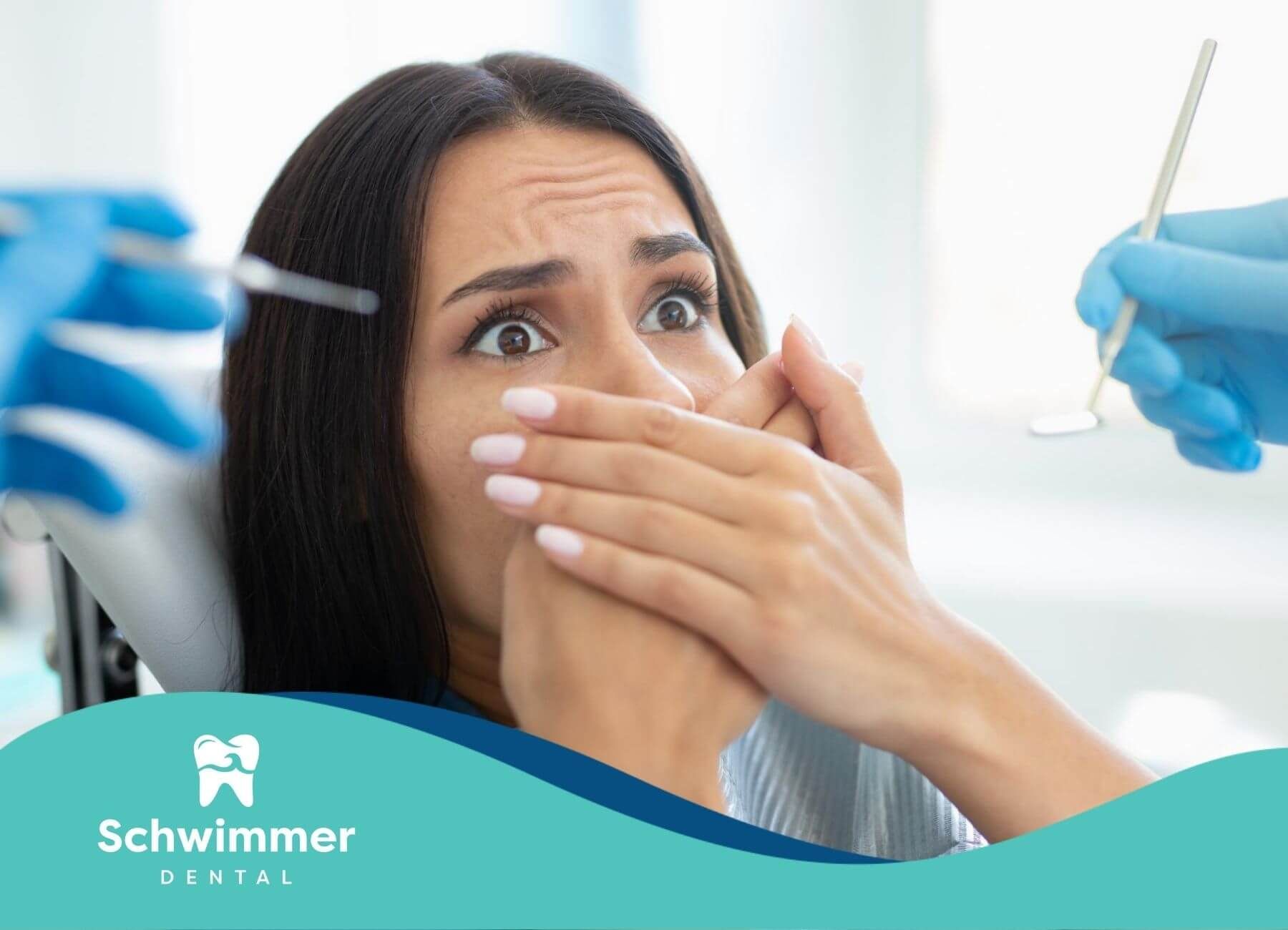The Incredible Benefits of Laser Dentistry You Should Know
Laser Dentistry Overview
Laser dentistry represents a significant advancement in oral health care. Understanding its origins, approval status, and recognition helps in appreciating the benefits of laser dentistry.
Evolution of Laser Dentistry
Lasers became a common tool in dentistry during the 1990s. Initially used for a limited scope of procedures, their role has since expanded to include treatments like teeth whitening, tooth decay removal, gum disease management, and lesion care. The advanced technology offers key advantages over traditional dental tools, such as higher precision and less discomfort for patients.
Timeline:
- 1990s: Introduction and rise of dental lasers for tooth tissue procedures.
- Post-2000: Expanded use in various dental conditions and more advanced applications.
- Post-2020: Increased focus on oral hygiene, disinfection, wound healing, and tissue regeneration.
The three types of lasers most frequently employed in dentistry are:
- Carbon Dioxide (CO2) Laser: Mainly used for soft tissue surgery.
- Erbium-Doped Yttrium Aluminum Garnet (Er:YAG) Laser: Suitable for both hard and soft tissue.
- Diode Laser: Commonly used for soft tissue, offering versatility and precision.
Approval and Recognition
Laser dentistry has garnered significant recognition within the health community. The Food and Drug Administration (FDA) has approved the use of lasers for several dental procedures, reinforcing their safety and effectiveness.
However, it’s essential to note that while the FDA approves and regulates laser use, the American Dental Association (ADA) acknowledges the effectiveness of laser dentistry but hasn't provided full endorsement. The ADA recognizes the role of laser technology in improving the precision of dental work and reducing patient discomfort.
For dentists and dental assistants interested in adopting laser technology, obtaining laser dentistry training is crucial for ensuring safe and effective use.
The growing body of research underscores the future potential of laser dentistry. Lasers play a valuable role in disinfection, inflammation reduction, and tissue regeneration. The ongoing innovations and advancements in this field suggest a promising future for laser applications in dental care.
For more related information, explore laser dentistry procedures and laser dentistry for gum disease.
Benefits of Laser Dentistry
Laser dentistry offers a range of benefits that make it a preferred choice for many dental procedures. The advantages include cost-effectiveness, effective pain management, and the precision and minimally invasive nature of the procedures.
Cost-Effectiveness
Laser dentistry can be more cost-effective in the long run compared to traditional dentistry. Although the initial cost for laser equipment may be higher, the benefits and efficiency of laser procedures can lead to savings over time. Patients may require fewer follow-up visits and experience fewer complications, which can reduce overall treatment costs.
According to
Healthline, dental insurance reimbursement costs are generally determined based on the specific treatment rather than the method used. This means that the compensation for laser treatments is likely to be similar to traditional procedures like drilling.
| Procedure | Cost Range (USD) | Method |
|---|---|---|
| Cavity Filling | $90 - $250 | Traditional |
| Cavity Filling | $100 - $300 | Laser |
| Gum Surgery | $500 - $2000 | Traditional |
| Gum Surgery | $600 - $2500 | Laser |
Pain Management
Pain management is one of the significant benefits of laser dentistry. Laser tools generate less friction, heat, and noise compared to traditional dental methods, making procedures more comfortable for patients. Reports indicate that
patients often experience little to no pain during laser treatments, reducing the need for local anesthesia.
This makes laser dentistry particularly appealing for individuals with anxiety, low pain tolerance, or bleeding disorders. For a more comfortable dental experience, you might consider the benefits of laser dentistry for gum disease treatment.
Precision and Minimally Invasive Procedures
Laser dentistry is renowned for its precision and minimally invasive nature. Lasers target only the affected areas, leaving the surrounding healthy tissues untouched. This precision reduces tissue damage, bleeding, and swelling, contributing to a quicker recovery period and less discomfort for the patient.
For example, in gum treatments, laser therapy helps to reduce bleeding and swelling, enhances patient comfort, and promotes regrowth of healthy tissue. This contributes to a smoother recovery process.
In summary, laser dentistry provides numerous benefits for patients and dental professionals. It’s cost-effective, offers superior pain management, and allows for precise and minimally invasive treatments. This makes it an attractive option for many dental procedures.
Types of Laser Procedures
Advancements in laser technology have significantly transformed dental treatments, offering precision and less invasive options. Understanding the types of laser procedures can help patients in Point Pleasant Beach, New Jersey, and beyond make informed decisions about their dental care.
Hard Tissue Treatments
Hard tissue lasers are specifically designed to cut through tooth structure, enabling a variety of dental procedures with enhanced precision. These lasers are ideal for:
- Tooth Preparation and Shaping: Hard tissue lasers are used to shape teeth for bonding procedures. The laser precisely cuts the enamel and dentin while causing less discomfort and reducing the need for anesthesia.
- Repairing Dental Fillings: These lasers can remove old fillings efficiently, providing a clean and smooth surface for new fillings. The precision of the laser ensures minimal loss of healthy tooth structure.
- Cavity Removal: Hard tissue lasers are effective for eliminating tooth decay without the need for traditional drills. This method is less invasive and more comfortable for patients.
Soft Tissue Treatments
Soft tissue lasers offer unparalleled precision and control for treating gums and other soft tissues. Key applications include:
- Gum Shaping and Contouring: Laser dentistry allows for accurate reshaping of the gum line, which is essential for both aesthetic treatments and procedures involving gum disease. The laser's precision reduces bleeding and promotes quicker healing.
- Gum Disease Treatment: Lasers can target and remove infected gum tissue while preserving healthy tissue, which is crucial for effective gum disease management. This results in reduced bleeding, swelling, and discomfort.
- Biopsy and Lesion Removal: Soft tissue lasers are utilized for the minimally invasive removal of tissue samples or oral lesions. This technique minimizes damage to surrounding tissues and enhances the patient's comfort during recovery.
- Promoting Tissue Regeneration: The use of lasers in gum treatments not only reduces bleeding and swelling but also fosters healthy tissue regrowth, contributing to a smoother and faster recovery process.
| Procedure Type | Examples | Benefits |
|---|---|---|
| Hard Tissue | Tooth preparation, cavity removal, filling repair | Less discomfort, reduced need for anesthesia, precise cuts |
| Soft Tissue | Gum shaping, gum disease treatment, lesion removal | Reduced bleeding, faster healing, preserves healthy tissue |
Laser dentistry provides a less invasive and more comfortable alternative to traditional methods, enhancing patient experience and outcomes.
Safety and Risks
Laser dentistry offers numerous benefits, but understanding the safety measures and potential risks is crucial for ensuring a positive experience. Here, we delve into qualified professionals and necessary eye protection to mitigate tissue damage.
Qualified Professionals
The application of laser technology in dentistry requires specific training and expertise. The risks associated with laser dentistry are minimal, but having a qualified dental professional carry out the procedure is essential to avoid complications such as tissue damage. Ensuring that the practitioner has undergone appropriate laser dentistry training is crucial for patient safety. A comprehensive understanding of laser settings, techniques, and safety protocols can significantly minimize risks.
| Qualification | Importance |
|---|---|
| Laser Dentistry Certification | Ensures proficiency in operating laser equipment |
| Continuous Education | Keeps practitioners updated on the latest advancements |
| Hands-On Training | Provides practical experience and technique refinement |
Eye Protection and Tissue Damage
During laser dentistry procedures, special glasses are provided to protect the patient's eyes from potential harm caused by laser exposure. Eye protection is mandatory for both the patient and dental professional to prevent any damage caused by the laser beam.
Lasers used in dentistry, such as carbon dioxide (CO2) lasers, erbium-doped yttrium aluminum garnet (Er:YAG) lasers, and diode lasers, offer high precision and control, reducing the risk of unintentional tissue damage. Nonetheless, precautions must be taken:
- Proper Calibration: Ensuring the laser device is correctly calibrated to maintain safe energy levels.
- Controlled Exposure: Limiting laser exposure to targeted areas to minimize collateral tissue impact.
- Continuous Monitoring: Dental professionals should constantly monitor during the procedure to avoid excessive exposure.
The antimicrobial properties of lasers contribute to a reduced risk of postoperative infections and improved wound healing.
Healing and Recovery
Laser dentistry is recognized for its numerous advantages, particularly when it comes to healing and recovery. This section explores how laser treatments contribute to shorter healing times and reduced discomfort for patients.
Faster Healing Times
Laser dentistry leverages advanced technology that promotes rapid recovery, allowing patients to resume their daily activities promptly. The precision and minimal tissue damage associated with laser procedures are key factors contributing to this accelerated healing process. Lasers can stimulate tissue regeneration, which is vital for swift recovery and improved outcomes.
A significant benefit of using lasers is their ability to disinfect and reduce inflammation, which can expedite the healing process. Research indicates that laser treatments, including photobiomodulation (PBM) with low-level lasers or LEDs, play an essential role in oral healthcare by aiding wound healing and tissue regeneration.
| Healing Attribute | Traditional Methods | Laser Dentistry |
|---|---|---|
| Healing Time | Longer | Faster |
| Tissue Damage | More | Less |
| Tissue Regeneration | Slower | Stimulated |
| Risk of Infection | Higher | Reduced |
Reduced Discomfort
One of the primary benefits of laser dentistry is the substantial reduction in postoperative pain and discomfort. Laser therapy often leads to less swelling and inflammation, which contributes to improved comfort during the healing phase. Patients report minimal swelling and reduced pain, which translates to lesser dependence on pain medication and enhanced overall experience.
Laser technology also facilitates precise tissue sectioning, sparing adjacent structures from damage and further reducing discomfort. During periodontal treatments, cavity preparations, and other dental procedures, lasers lower the risks of bleeding and swelling, often eliminating the need for local anesthesia.
Future of Laser Dentistry
The future of laser dentistry holds tremendous promise with ongoing innovations and potential advancements that can revolutionize dental care. These developments are exciting for parents and family members of children needing dental care, individuals with specific dental needs, seniors, and dental professionals in Point Pleasant Beach, New Jersey.
Ongoing Innovations
Recent research indicates that lasers are becoming increasingly central in ensuring effective oral hygiene and dental treatment. Lasers excel in disinfection, wound healing, and reducing inflammation, demonstrating their significant potential for ongoing innovations in dental technology.
Several areas show promise for continued innovation in laser dentistry:
- Periodontal Therapy: Lasers in periodontal therapy show enhanced results in treating gum disease (laser dentistry for gum disease). The precision and sterilization capabilities of lasers ensure more effective treatments.
- Tooth Regeneration: Emerging research points to the potential for using lasers to stimulate tooth regeneration. This could significantly impact the approach to treating damaged teeth.
- Root Canal Therapy: Advancements in laser-assisted root canal therapy could lead to more effective and less invasive procedures.
Continuous advancements in laser technology could make dental treatments less painful, more efficient, and highly effective.
Potential Advancements
Innovations in laser technology create the foundation for several potential advancements in dental procedures:
| Potential Advancements | Benefits |
|---|---|
| Improved Tissue Precision | Lasers allow for precise tissue sections, minimizing damage to adjacent structures. |
| Faster Recovery | Enhanced healing times with less inflammation and edema are expected outcomes. |
| Expanded Procedural Applications | Lasers might be applied to more complex procedures, such as tooth regeneration. |
- Minimized Adjacent Tissue Damage: By utilizing advanced lasers, the precision in cutting or ablating tissues reduces the risk of damage to surrounding areas, which is crucial for delicate procedures.
- Promoting Fast Recovery: Laser treatments tend to involve less bleeding, reduced swelling, and quicker recovery periods—benefits that are particularly valuable for all patients, particularly seniors and children.
- Innovative Procedural Developments: Future applications may include more advanced periodontal therapies, improved tooth regeneration methods, and enhanced techniques for root canal treatments.
As the field of laser dentistry continues to evolve, these advancements will likely play an increasingly important role in modern dental practices.
SOURCES:
https://www.healthline.com/health/laser-dentistry
https://pmc.ncbi.nlm.nih.gov/articles/PMC11674728/
https://vocal.media/journal/how-does-laser-dentistry-compare-to-traditional-dental-methods
https://www.dentalcare.com/en-us/ce-courses/ce394/types-of-dental-lasers
https://pmc.ncbi.nlm.nih.gov/articles/PMC4599202/
https://pmc.ncbi.nlm.nih.gov/articles/PMC11674728/
https://www.linkedin.com/pulse/why-2025-emerging-breakthrough-year-laser-dentistry-yavagal-icz6c/



